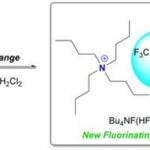
A groundbreaking study from the University of California San Diego has unveiled how precise timing of dietary intake orchestrates the complex symphony of microbial gene activity within the gut, revealing new pathways to combat metabolic diseases such as obesity and diabetes. Utilizing advanced metatranscriptomic analyses, researchers have charted the dynamic daily rhythms of gut bacteria, uncovering metabolic mechanisms influenced by time-restricted feeding (TRF). This intervention, which confines nutrient consumption to a limited window each day, counters the deleterious effects of high-fat diets by restoring microbial function and improving host metabolic health.
The gut microbiome, a vast community of microscopic organisms residing in the digestive tract, is integral to nutrient metabolism and energy balance. These microbial populations exhibit diurnal fluctuations, modulating their activities in coordination with the host’s feeding patterns. However, lifestyle factors such as continuous high-fat diet intake disrupt these circadian rhythms, precipitating metabolic dysregulation. The study sought to understand how TRF reestablishes functional microbial rhythms lost in the context of a high-fat diet and the molecular mediators underpinning these effects.
In meticulously controlled murine models, scientists orchestrated three feeding regimens: traditional unrestricted access to a high-fat diet, TRF with an eight-hour daily feeding window on the same diet, and a control group consuming a standard diet ad libitum. Over an eight-week period, the TRF group exhibited pronounced metabolic resilience, characterized by improved glucose homeostasis and reduced adiposity. These physiological improvements coincided with remarkable shifts in microbial gene expression patterns, as revealed by metatranscriptomic profiling—a technique capturing real-time RNA activity that elucidates not only gene presence but functional engagement.
.adsslot_Euw4eAdO7B{width:728px !important;height:90px !important;}
@media(max-width:1199px){ .adsslot_Euw4eAdO7B{width:468px !important;height:60px !important;}
}
@media(max-width:767px){ .adsslot_Euw4eAdO7B{width:320px !important;height:50px !important;}
}
ADVERTISEMENT
This high-resolution temporal analysis uncovered that TRF reinstates periodicity to the expression of genes integral to carbohydrate and lipid metabolism, rhythms obliterated in mice fed the high-fat diet without temporal restriction. The restored oscillations in microbial gene activity illuminate how simply altering feeding times can recalibrate host-microbe interactions to favor metabolic health. Traditional metagenomics, which catalogs microbial gene content without temporal or activity context, failed to detect such nuanced changes, underscoring the pioneering application of metatranscriptomics in this study.
Delving deeper into the microbial pathways mediating these benefits, researchers identified bile salt hydrolase (BSH)—an enzyme produced by specific gut bacteria known to modulate lipid digestion and glucose metabolism—as a pivotal player. TRF notably elevated the expression of the bsh gene in the bacterium Dubosiella newyorkensis, a microbe with a human analog, suggesting evolutionary conservation of this metabolic axis. This enzyme’s temporal activity underscores a finely tuned, time-dependent microbial influence on host metabolism.
To ascertain causality, scientists employed genetic engineering to insert various bsh gene variants into a benign bacterial strain and administered these modified microbes to mice. Strikingly, only the variant derived from D. newyorkensis, which exhibited peak expression during TRF, conferred significant metabolic advantages. Treated mice showed enhanced insulin sensitivity, superior blood glucose regulation, reduced fat accumulation, and increased lean muscle mass. This bioengineering approach validates the hypothesis that temporal microbial gene expression is mechanistically linked to host metabolic control.
The implications of these findings reverberate across microbiome research and metabolic disease therapeutics. They provide a template for developing next-generation probiotic interventions that harness not only specific microbial species but also their time-sensitive functional states. By exploiting the chronobiology of the gut microbiota, such interventions could be tailored to mimic the beneficial effects of dietary time restriction without necessitating stringent behavioral changes, offering a precision medicine avenue for patients challenged by adherence to strict feeding schedules.
Moreover, this research positions metatranscriptomics as an indispensable tool in microbiome science, transcending static genomic surveys to capture the temporal dynamics of the microbial community. Deciphering the oscillatory patterns of gene expression grants unprecedented insight into how the microbiome’s metabolic output synchronizes with the host’s physiological demands, orchestrating systemic metabolic outcomes. This dynamic perspective propels the field toward a holistic understanding of host-microbe symbiosis.
Future investigations, as outlined by the research team, will expand the scope of engineered microbes to include other rhythmically regulated genes unveiled by their metatranscriptomic datasets. They will also explore the therapeutic efficacy of these microbes in established obesity and diabetes models, bridging the gap between foundational discovery and clinical application. The translational potential harbored in designing time-aware microbial therapies heralds a paradigm shift in managing metabolic diseases.
The study further emphasizes the necessity of integrating microbiome function with host chronobiology, advocating for dietary interventions that respect the temporal dimension of host-microbe interactions. As such, it challenges prevailing dietary guidelines by revealing that when we eat may be as consequential as what we eat, mediated through the microbial ecosystem residing within us.
Collaborators in this study include experts from UC San Diego, the Salk Institute for Biological Studies, and Arizona State University, whose combined expertise in microbiology, molecular genetics, and bioengineering fostered this innovative inquiry. Their multidisciplinary approach underscores the complexity of microbiome research and the necessity of cutting-edge methodologies to unravel its mysteries.
In summary, this research illuminates a previously underappreciated chronometabolic mechanism whereby dietary timing governs gut microbial activities that directly shape host metabolic health. The strategic modulation of microbial gene expression rhythms through TRF and engineered probiotics offers a promising frontier for combating pervasive metabolic disorders, reinforcing the intricate interplay between diet, microbiome, and host physiology.
Subject of Research: The impact of time-restricted feeding on gut microbiome gene expression rhythms and metabolic health via bile salt hydrolase activity.
Article Title: Time-Restricted Feeding Restores Gut Microbial Rhythms and Improves Metabolic Health Through Bile Salt Hydrolase Activity
News Publication Date: June 18, 2025
Web References:
https://www.cell.com/cell-host-microbe/fulltext/S1931-3128(25)00207-0
References:
10.1016/j.chom.2025.05.024
Image Credits:
Elizabeth Brown/UC San Diego Health Sciences
Keywords:
Bacteria, Metabolism, RNA, Gene transcription, Synthetic biology
Tags: advanced metatranscriptomic analysescircadian rhythms and nutritiondietary timing and metabolic healthgut microbiome dynamicshigh-fat diet impacts on metabolismlifestyle factors affecting gut microbiotametabolic disease treatment strategiesmicrobial rhythms in gut healthnutrient metabolism and energy balanceobesity and diabetes researchrestoring microbial function through diettime-restricted feeding benefits



